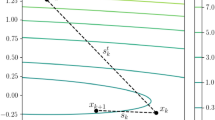Abstract
The Boltzmann machine is one of widely used neural network models used to cope with difficult combinatorial optimisation problems. It has been used to find near optimum solutions to such hard problems as graph partitioning and the Travelling Salesman problem. However, very little is known about the time complexity of solving combinatorial optimisation problems on Boltzmann machines. This issue is important because it will help us better understand the power of Boltzmann machines in dealing with hard problems. This paper studies the time complexity of maximum matching in a graph on Boltzmann machines. It is shown that some widely-used Boltzmann machines cannot find a maximum matching in average time polynomial in the number of nodes of the graph although there are conventional deterministic algorithms which solve the problem in polynomial time. On the other hand, this paper also shows that a simpler model of Boltzmann machines, with the 'temperature' parameter fixed at some constant, can find a near maximum matching in polynomial average time.
Similar content being viewed by others
References
J.H.M. Korst and E.H.L. Aarts, “Combinatorial optimization on a Boltzmann machine”, J. of Parallel and Distributed Computing, Vol. 6, pp. 331–357, 1989.
D.H. Ackley, G.E. Hinton and T.J. Sejnowski, “A learning algorithm for Boltzmann machine”, Cognitive Science, Vol. 9, pp. 147–169, 1985.
M.R. Garey and D.S. Johnson, Computers and Intractability: A Guide to the Theory of NP-Completeness, W.H. Freeman Co., San Francisco, 1979.
X. Yao, “Simulated annealing with extended neighbourhood”, International J. of Computer Mathematics, Vol. 40, pp. 169–189, 1991.
G.H. Sasaki and B. Hajek, “The time complexity of maximum matching by simulated annealing”, Journal of the ACM, Vol. 35, pp. 387–403, 1988.
J. Bruck and J.W. Goodman, “On the power of neural networks for solving hard problems”, Journal of Complexity, Vol. 6, pp. 129–135, 1990.
X. Yao, “Finding approximate solutions to NP-hard problems by neural networks is hard”, Information Processing Letters, Vol. 41, pp. 93–98, 1992.
Author information
Authors and Affiliations
Rights and permissions
About this article
Cite this article
Yao, X. Maximum Matching on Boltzmann Machines. Neural Processing Letters 7, 49–53 (1998). https://doi.org/10.1023/A:1009636805756
Issue Date:
DOI: https://doi.org/10.1023/A:1009636805756




